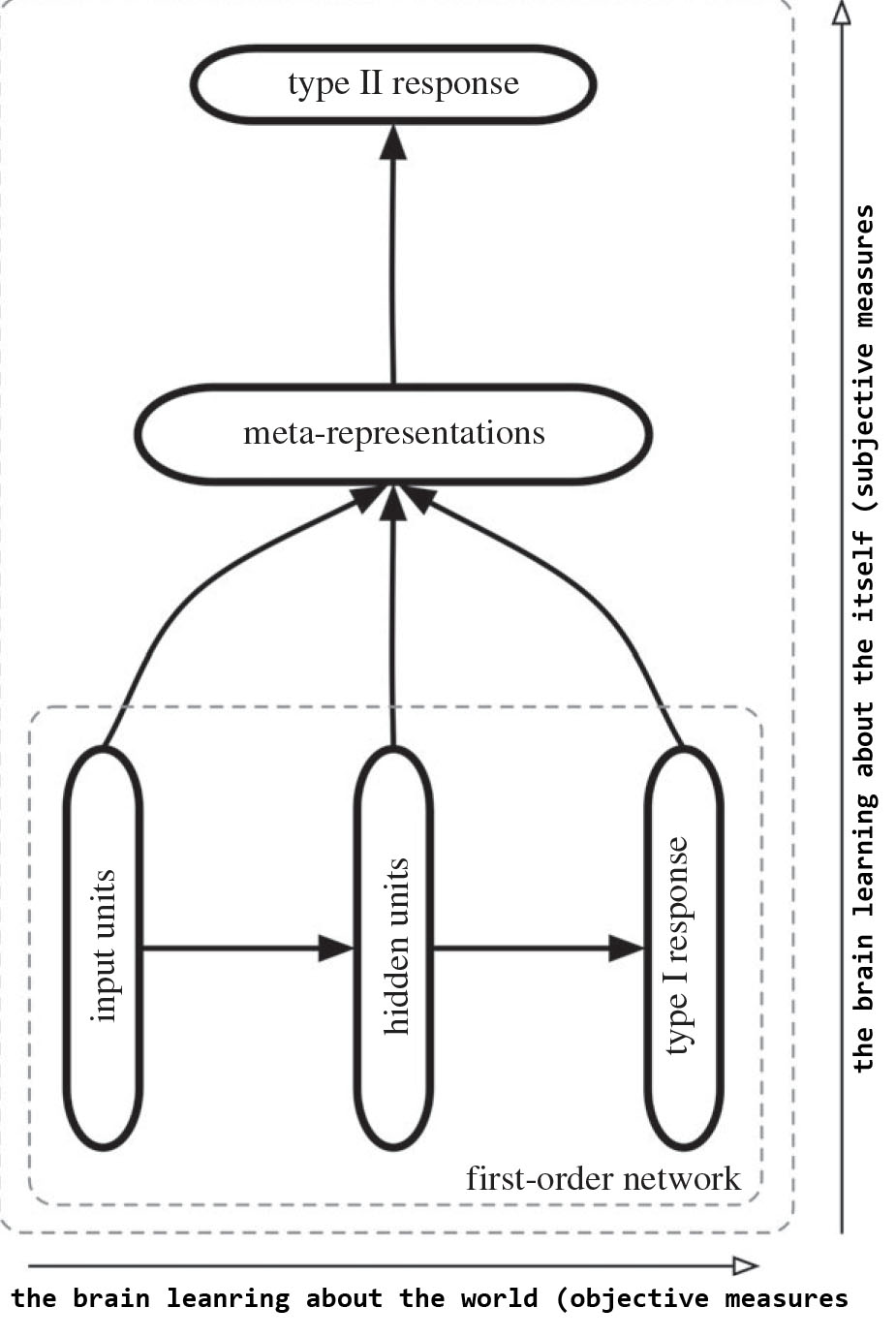| << Chapter < Page | Chapter >> Page > |
The internet encyclopedia of philosophy has a good entry on higher order theories of consciousness. Here Higher-Order Theories of Consciousness. Internet Encyclopedia of Philosophy. Entry by Paula Droege. Retrieved from http://www.iep.utm.edu/consc-hi/ 7/2/14 they reference a theory of Rosenthals:
Of course if someone has a thought about the pain they are experiencing the pain is going to be more conscious. It obviously depends on the situation if the thought makes the pain worse or less. I suppose a thought could make the pain less, but it would also make you more conscious and more aware of this lessened, (but more conscious) pain.
A model is proposed in the below image (B. Timmermans, et all), this is in the abstract of their paper:

One can think of the
first-order network as instantiating cases where the brainlearns about the world and of the second-order (outside box) network as
instantiating cases where the brain learns about itself. Reference - "Higher order thoughts in action:consciousness as an unconscious
re-description process" Phil. Trans. R. Soc. B (2012) 367, 1412–1423 B. Timmermans, L Schilbach, A Pasquali,and A Cleeremans
My interpretation is explained a little differently from their explanation, but is still similar to theirs. The inner loop of the first order network is about the brain learning about the world, first there is stimuli and then brain thinks about the stimuli. When the brain thinks about the stimuli it forms meta-cognitions and has a secondary response from its initial response.

Notification Switch
Would you like to follow the 'How does cognition influence emotion?' conversation and receive update notifications?